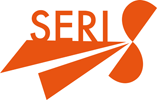e5.at for a future worth living
SERI, in close cooperation with the Institute of Economic Structures Research (GWS; Osnabrück, Germany), is developing the sustainability model e5.at to examine questions of sustainability policy in a comprehensive way.
SERI and GWS both have the required know-how to realise such an important and ambitious undertaking. The preceding model e3.at (see www.energiemodell.at) already jointly developed by SERI and GWS proves that, though it now has to be rebuilt from scratch due to changes in the official statistics.
e5 was named for the five aspects Economy – Employment – Environment – Energy – Equity, issues that are all crucial to a future sustainable development. Analysing these facets in one framework helps to illustrate their interdependencies and optimally solve conflicts of objectives
e5.at - why?
Currently, there is no appropriate model for the assessment of scenarios and strategies for sustainable development in Austria. e5.at, being a macroeconomic, multisectoral model, will be an effective tool to measure the impact of policy making on the ecological, economic and social dimensions of sustainable development.
e5.at can support political actors in their choice of suitable instruments and measures, as it considers and quantifies systemic conflicts of objectives of different indicators (economic growth, income, employment, material and energy consumption, CO2 emissions, etc.) in a consistent framework.
The dynamic orientation of the model allows to simulate scenarios for different policies and their effects on specific industries, households or the economy as a whole over the time frame of 15 to 20 years in the future.
Possible subject areas include:
- the effects of environmental policy on the economy (e.g. GDP, employment, price development), ecology (e.g. development of CO2 emissions, energy and material consumption) and society (development of consumption expenditure and the disposable income of different households)
- growth and employment stimuli of dematerialisation strategies
- effects of an eco-social fiscal reform in Austria
- the economic and ecological evaluation of growing foreign trade interdependency
- effects of a changing economic development on distribution, employment, environment, etc.
- consequences of demographic change on the labour market, demand and economic development as a whole
- consequences of technological change (e.g. Industry 4.0) for economic development and sectors
- regular projections of employment development of certain industries and regions
e5.at - how?
The model is built on empirical data from national (e.g. Statistik Austria) and international (e.g. IEA) institutions, to depict future developments. It differentiates between more than 50 economic sectors such as agriculture, mechanical engineering, the building industry, energy supply and transportation. This detailed classification enables a focused consideration of specific sectors and thus yields valuable indications of structural change and the effects on up- or downstream economic sectors.
On the consumption side, e5.at aims to be similarly detailed, distinguishing between consumption expenditures such as food, clothing or rent, which helps in the examination of changes in consumption patterns. In order to illustrate distribution effects, households that differ in size and income, could be incorporated (if the nescessary data is available)
The depiction of structural change and its effects on consumption and distribution is crucial, as long-term sustainable development needs a reorientation of economic structures. Pressure on certain sectors or social groups can be identified and cushioned by social justice and supporting measures. The transition towards sustainable development can thus be shaped with regard to social and economic acceptability.
The model is designed in a modular way. In addition to a detailed economic and laber market model, the idea is to develop an energy model, a material model, a transportation model and a housing stock model. Furthermore, e5.at can be extended by a foreign trade module to illustrate importe dependencies and the Austria’s interlacing with Europe and important trading partners. On top of that, the integration of education and time use could be integrated into the model.
All parts of the model will be connected consistently to highlight their interdependencies. Not nescessarily all modules have to be developed at the same time. Instead, it is possible that specific parts are financed by different investors.
Possible co-financing through projects!
We are looking for clients that want to finance relevant projects and thus support the development of e5.at. The modules do not have to be established all at once, specific parts (eg. the economic, labour market or energy model) can be set up and used independently.
The co-financing of the model’s construction allows us to develop a model that can be leading the way towards a sustainable Austria worth living in. Once the model is finished, further paid projects make it self-sufficient, even if it has to be updated developed further.
We want to invite you to be part of a sustainable future and support us in the development of e5.at!
We are looking forward to speaking to you personally.
Contact
Andrea Stocker
andrea.stocker[at]seri.at

